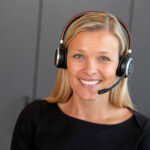Obstacle light
Obstacle lights and lamps are typically used to mark high structures: masts, chimneys, buildings, wind turbines, bridges, etc., to make the structures visible to aviation and thereby avoid collisions.
Obstacle lights, aircraft lights, light marking or marking lights – a beloved child has many names
Where are obstacle lights used?
Obstacle lights and lamps are typically used to mark high structures: masts, chimneys, buildings, wind turbines, bridges, etc., to make the structures visible to aviation and thereby avoid collisions. In short, it’s about aviation safety and optimal marking of potential obstacles.
The light intensity can also vary depending on the background lighting (day/night/dusk), and this is typically regulated using a built-in photocell.
If there are multiple obstacle lights and they flash, the flashes are typically synchronized via a GPS time signal.
When using LED lights, it is important to note that pilots during night flights with military aircraft use light-enhancing equipment – Night Vision Goggles (NVG). For optimal visibility, especially the red obstacle light should be optimized with an additional Infrared IR light component, which makes the obstacle lights more visible in the spectrum within wavelengths of 645-905 nanometers (nm).
Safety in aviation
The International Civil Aviation Organization (ICAO) is the UN body responsible for aviation safety. ”ICAO Annex 14 Volume I Aerodrome Design and Operations” includes chapter 6 “VISUAL AIDS FOR DENOTING OBSTACLES”, which deals with obstacle lights. Many national civil aviation authorities rely on these recommendations and technical guidelines, which are widely implemented in national legislation, often with various national deviations, changes, etc.
Here in Denmark, the Danish Transport, Construction and Housing Authority is the responsible public authority, and the legislation regarding obstacle lights/aircraft lights is specified in the following document:
BL 3-10 Provisions on aviation obstacles (Edition 2, January 22, 2010)
However, this document was updated and tightened on July 1, 2018, in the document: ”BL 3-10 B Provisions on amendment of BL 3-10, Provisions on aviation obstacles, 2nd edition of January 22, 2010”
This document essentially implements updated technical characteristics for obstacle lights from the ICAO Annex 14 version from 2016.
IMPORTANT: In Denmark, ICAO “Recommendations” (see table 6-3) are mandatory and elevated to law according to AIP Denmark, AD 1, AD 1.1, “2. Applicable ICAO Documents”
This is a tightening compared to other countries and means that one should specifically ensure that obstacle lights comply with these tightened lighting technical requirements, as this is NOT the case for the vast majority of obstacle light products available on the market! Obelux & Hans Buch A/S have jointly ensured that all obstacle lights also comply with “Recommendations”.
Marking of wind turbines:
In 2013, Section 8 of BL 3-10 regarding the marking of wind turbines was discontinued and replaced by a separate document: ”BL 3-11, Provisions on aviation marking of wind turbines”.
In connection with this, the following has also been published: ”Guidance to BL 3-11 Provisions on aviation marking of wind turbines”
Legislation in other Scandinavian countries:
In Sweden, the national regulations can be found here:
In Norway, the national regulations can be found here: “Regulation on reporting, registration, and marking of aviation obstacles”.
Solutions from Hans Buch A/S for safe aviation
We typically replace older obstacle lights and lamps from the German manufacturer WERMA, American Flash Technology and Honeywell, and the older Danish manufacturer Reofon, among others.
For questions, challenges, or projects related to obstacle lights, you are always welcome to contact Patrick Darrell or Kristian Kristensen, both of whom have extensive experience in this area.
Would you like to know more?




